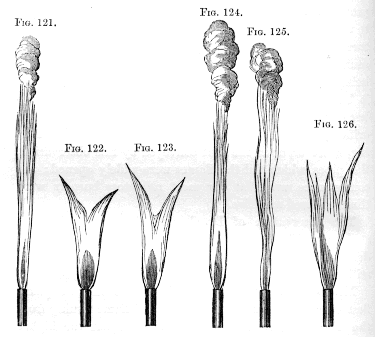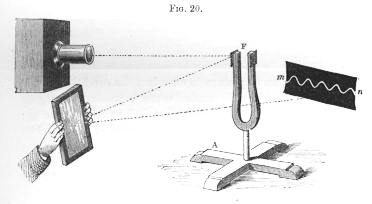Today, we wonder how people measured sound a hundred years ago. The University of Houston's College of Engineering presents this series about the machines that make our civilization run, and the people whose ingenuity created them.
An American professor named Le Conte went to an evening gathering -- one that was typical in the 19th century. It was a lamplit musical party. He wrote about it in the 1858 Philosophical Magazine:
Soon after the music began, I observed that the flame exhibited pulsations that were exactly synchronous with the audible beats. This ... phenomenon was very striking, [especially] when the strong notes of the 'cello came in. It was exceedingly interesting ... how perfectly even the trills ... were reflected on the sheet of flame.
Today we're so suffused with microphones, amplifiers, and oscilloscopes! It's hard to imagine a time when the study of sound wasn't equipped with high-tech electronics. Victorian scientists had nothing of the kind, and it's fascinating indeed to see the brilliant down-to-earth tactics they used to do what is now so easy. And so it was that the observant Le Conte -- his mind divided between music and physics -- seized on this new means for diagnosing sound.
One man in particular had a special genius for that kind of observation -- an Irish physicist named John Tyndall, born in 1820. He started out as an engineer developing railway equipment, but eventually earned a doctorate in Berlin. He came back to London to teach at the Royal Institute and to study the physics of sound and light.
Tyndall's book on sound shimmers with highly-honed mechanical means for displaying sound. He develops Le Conte's observation into an 18-page section called "Sensitive Naked Flames." Tyndall uses flames to measure pitch and tone quality. At one point he reads Spenser's lines to a flame, from across a room:
Her ivory forehead full of bounty brave,
Like a broad table did itself dispread;
For love his lofty triumphs to engrave
And write the battles of his great godhead.
And as he reads, he watches how the flame dances to the different vowel sounds.
He reflects light from tuning forks onto moving paper. He gazes at the effects of sound on water jets and shallow sand. There seems no end of stratagems. And they're all so direct and palpable. We finally close Tyndall's book -- this wild intermingling of music, phenomena, and poetry -- and we come back to our clean digital recordings. We come back to the 20th-century spawn of Le Conte's and Tyndall's work. Yet it would be a mistake to come all the way back. We can't afford to forget that we were brought here by this intimate weaving together of our minds and our senses.
I'm John Lienhard, at the University of Houston, where we're interested in the way inventive minds work.
(Theme music)
Tyndall, J., Sound: A Course of Lectures Delivered at the Royal Institution of Great Britain. New York: D. Appleton and Company, 1867.
This episode has been greatly revised as Episode 1670.

(From Sound, 1867)
Tyndall illustrates the effects of different vowel sounds on naked flames

(From Sound, 1867)
Tyndall shows how to project the motion of a tuning fork on a screen to create a sine wave